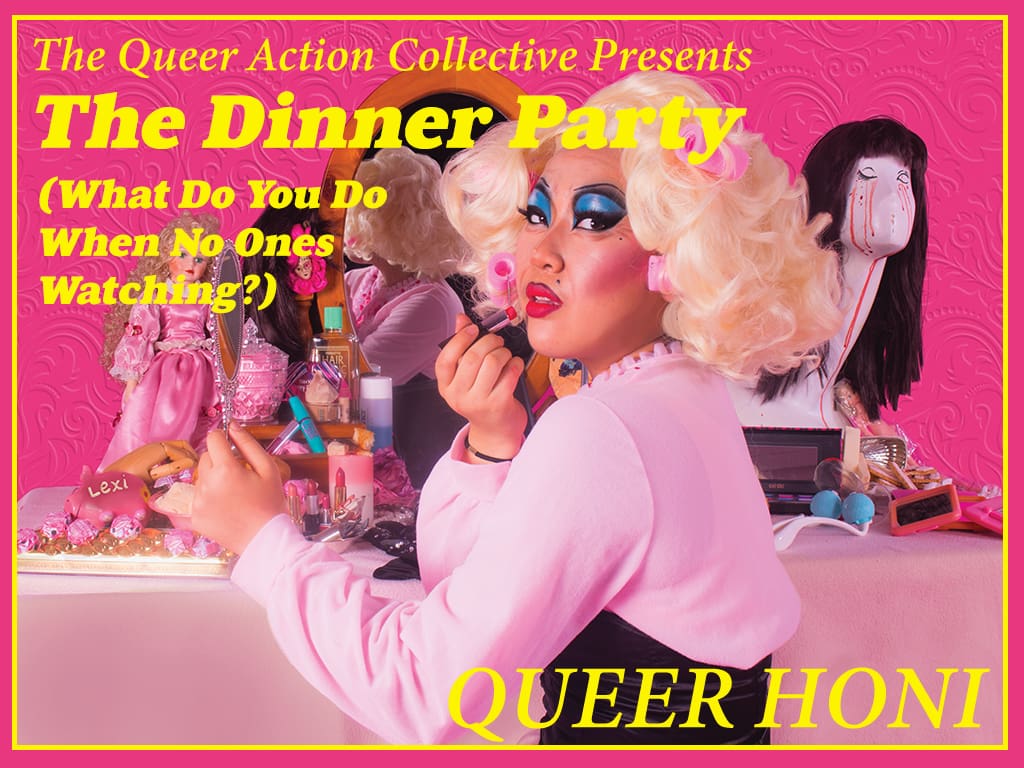Individuals all inherently and subconsciously curate their own image of identity to be consumed and understood by those around them. Particularly for queer people, adhering to or fervently denying the binary mores of hetero-gender normative society become essential acts of self-definition. It allows liberation from conventional ideology, which often does not provide space for our existence. A large part of one’s formative queer journey is often taken up by the attempt to find a sense of self and reconstruct an identity that aligns with their lived experiences. This self curation is exacerbated to a further extent with social media – an arena of exhibitionism and an opportunity to define oneself through visual and verbal autonomy that is conveniently collated on one’s profile.
I personally have great conflict with trying to maintain the equilibrium between the falsity and superficiality of presenting yourself to be subjected to voyeurs, with the innate desire to express my identity. To be that gross, primal creature of exorbitant love, egoism and self-indulgence but wracked with crippling self-doubt and uncontrollable emotions. The extent of which I’m able to verbally express myself is limited, and I often find my tongue caught in a knot tied by my social anxiety. Taking on this photographic series, I sought to visually express and expose the pervasive gender and social performativity that has become inherent to our contemporary culture.
Sometimes we find ourselves inadvertently appeasing to conventional societal values, putting on performances that deny our true identity and emotions in order to take up less space. By denying our truest colours and presenting the most digestible version of ourselves, we all contribute to an increasingly monotone and homogenised world—no matter what show or party of extravagance we attempt to put on.
What lies beyond the cracks of the constructed facades?
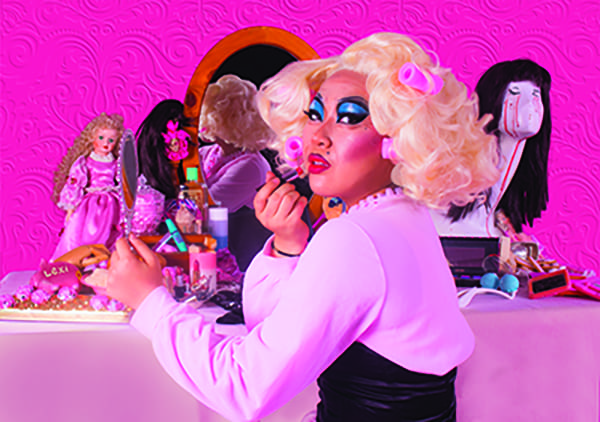
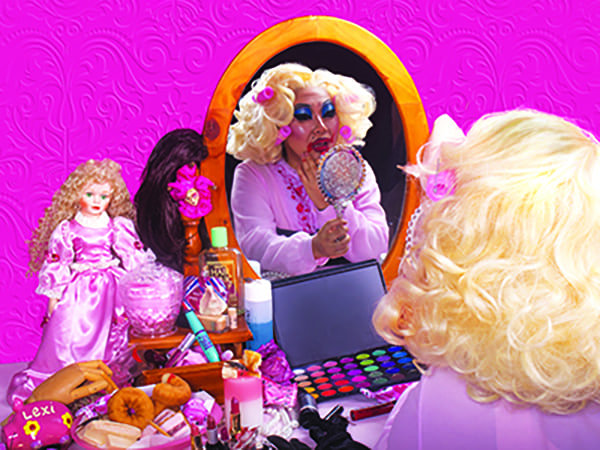
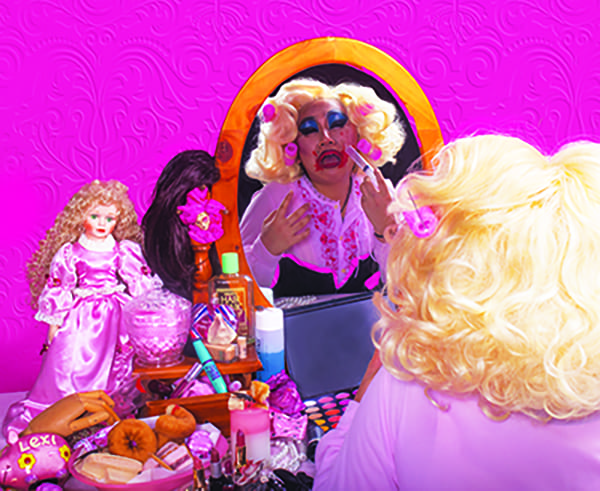
How can we truly express our emotions in these rigid environments that suppress them?
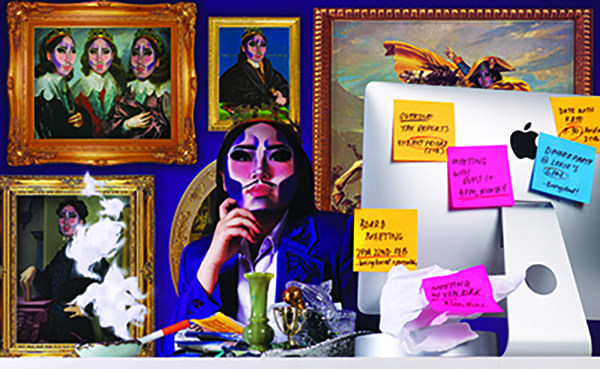
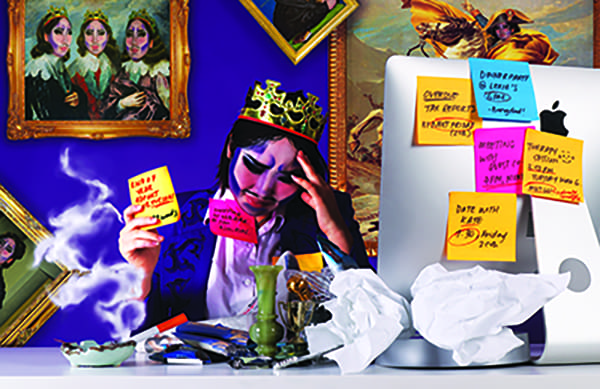
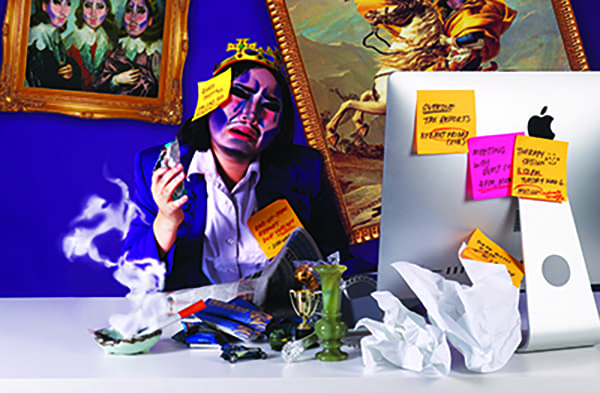
Why has our eating culture become so tied to the concept of “image” and “appearance”? Even the mere act of eating has become subject to a critical gaze. Not only are the visual aesthetics of the food we consume highly regarded, but the way we eat our food, and what food we choose to eat, are often criticised and linked to one’s body image and appearance.
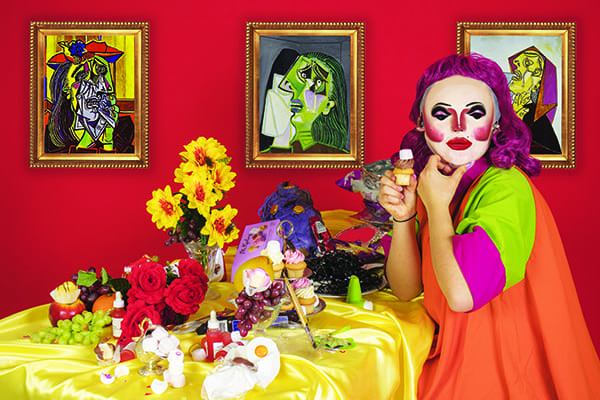
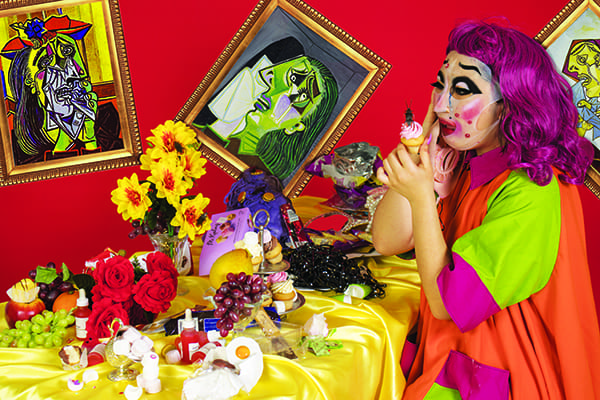

Life is just another long dinner party, and the dinner party can be the most performative act of them all. All three characters prepare for a dinner party—which is the “last supper” for all these tragic contemporary characters. They engage in performative and uncomfortable social interaction, having lost all sense of their personal identity and real human connection from living as the facades they present to those around them.
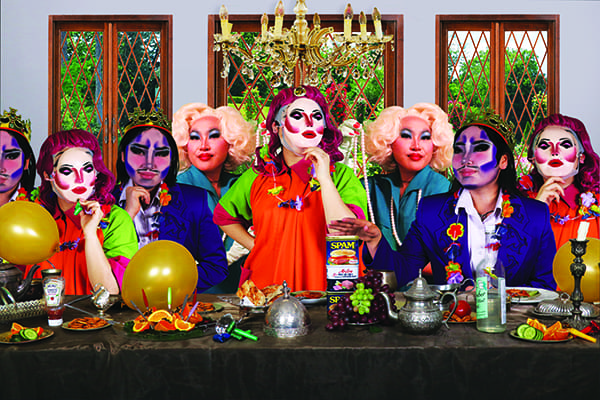
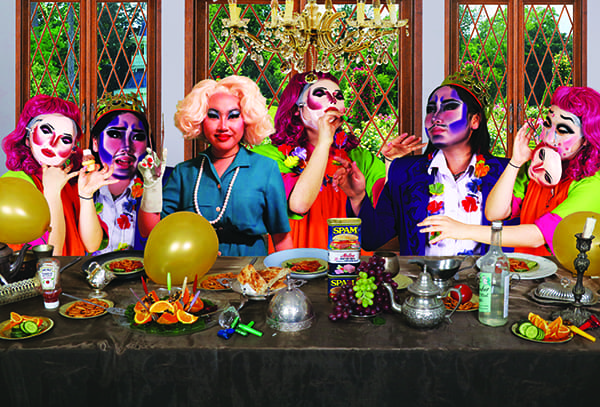
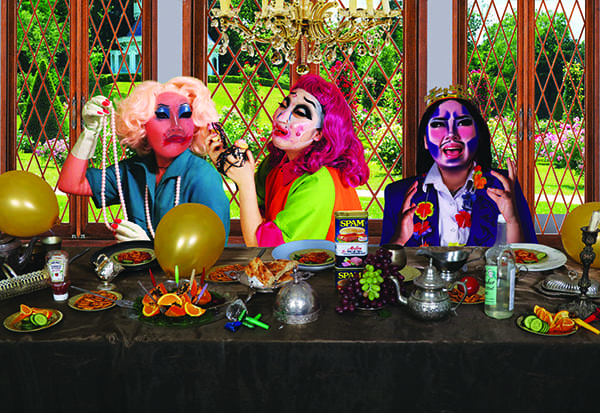
Through celebrating the art form of drag, I situate myself as these exaggerated characters: Lexi the host of the dinner party, Maximus the businessman suffering from alexithymia and superficial self-awareness, and Blossom the one who has succumbed to gluttony. By embodying common feminine and masculine archetypes, I attempt to dissect and personify traits drawn from the seven deadly sins: vanity, dysfunctional emotional expression and gluttony. In taking form as these characters innate within me, perhaps, I was even trying to explore the inherent performativity and caricaturing of queer bodies as flamboyant and theatrical. We need to be aware of our role as voyeurs and performers. I was also inspired by a quote from The Good Place, “parties are mere distractions from the relentlessness of entropy. We’re all just corpses who haven’t yet begun to decay”. This is both a celebration and critique of the inherent performativity of existence, we can both reject and embrace it.
Engaging in these great acts of performativity, putting together these sets, and wearing these brash costumes as extensions of my identity ironically exposed myself to a more vulnerable state. The series acts to highlight the universality of each character, as they intertwine and manifest within all our own identities, since we are all vulnerable to the severely critical gaze of our surroundings.




